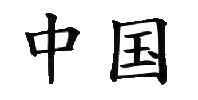China Beat Archive

China Beat Blog: Archive 2008-2012
Date of this Version
12-5-2008
Document Type
Article
Citation
December 5, 2008 in The China Beat http://www.thechinabeat.org/
Abstract
Americans associate bottom-up challenges to Deng Xiaoping with images of the massive 1989 protests. But those demonstrations were not the first acts of dissent Deng had to deal with by any means. More than a decade earlier, right after his Reform era began, came the “Democracy Wall Movement”—named for a Beijing area where critics started putting up posters (some of which warned of Deng becoming a dictator) in 1978. The term “democracy wall” had been used for comparable spaces back in the 1940s (when Chiang Kai-shek’s authoritarianism was being attacked) and again during 1957’s “Hundred Flowers” campaign. The 1957 precedent is particularly relevant because Deng responded to criticism in the late 1970s much as Mao Zedong had some twenty years earlier, first welcoming it as a healthy form of expression, then cracking down.
The Democracy Wall Movement of 1978-79 was not a single, coherent, organized struggle with a clear agenda but rather a constellation of activities by groups inspired by varied ideas. When remembered in the West, it tends to be simplified: treated as a liberal democratic project, even though the language of many posters was infused with Marxist concepts and ideals. There is more to keep in mind about Democracy Wall than the name of the unusually liberal Wei Jingsheng, who gained fame through crafting a powerful manifesto, “The Fifth Modernization,” which said Deng’s call for “Four Modernizations” (of agriculture, industry, education, science and technology, and education) left something out: democracy.
Included in
Asian History Commons, Asian Studies Commons, Chinese Studies Commons, International Relations Commons


Comments
Copyright December 5, 2008 Jeff Wasserstrom. Used by permission.